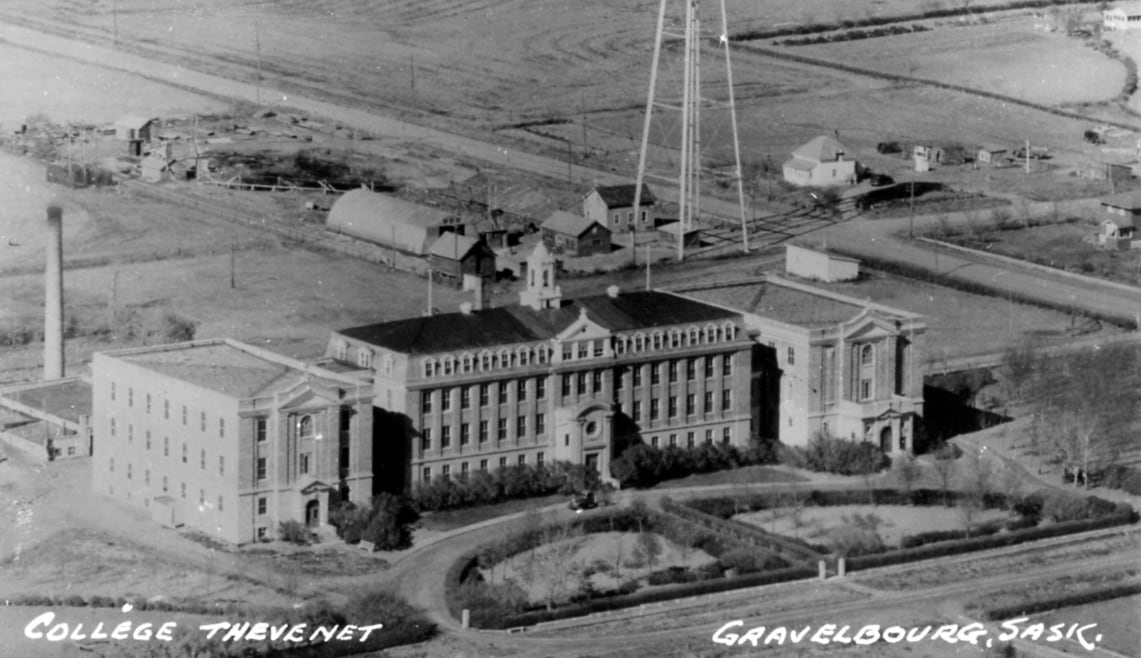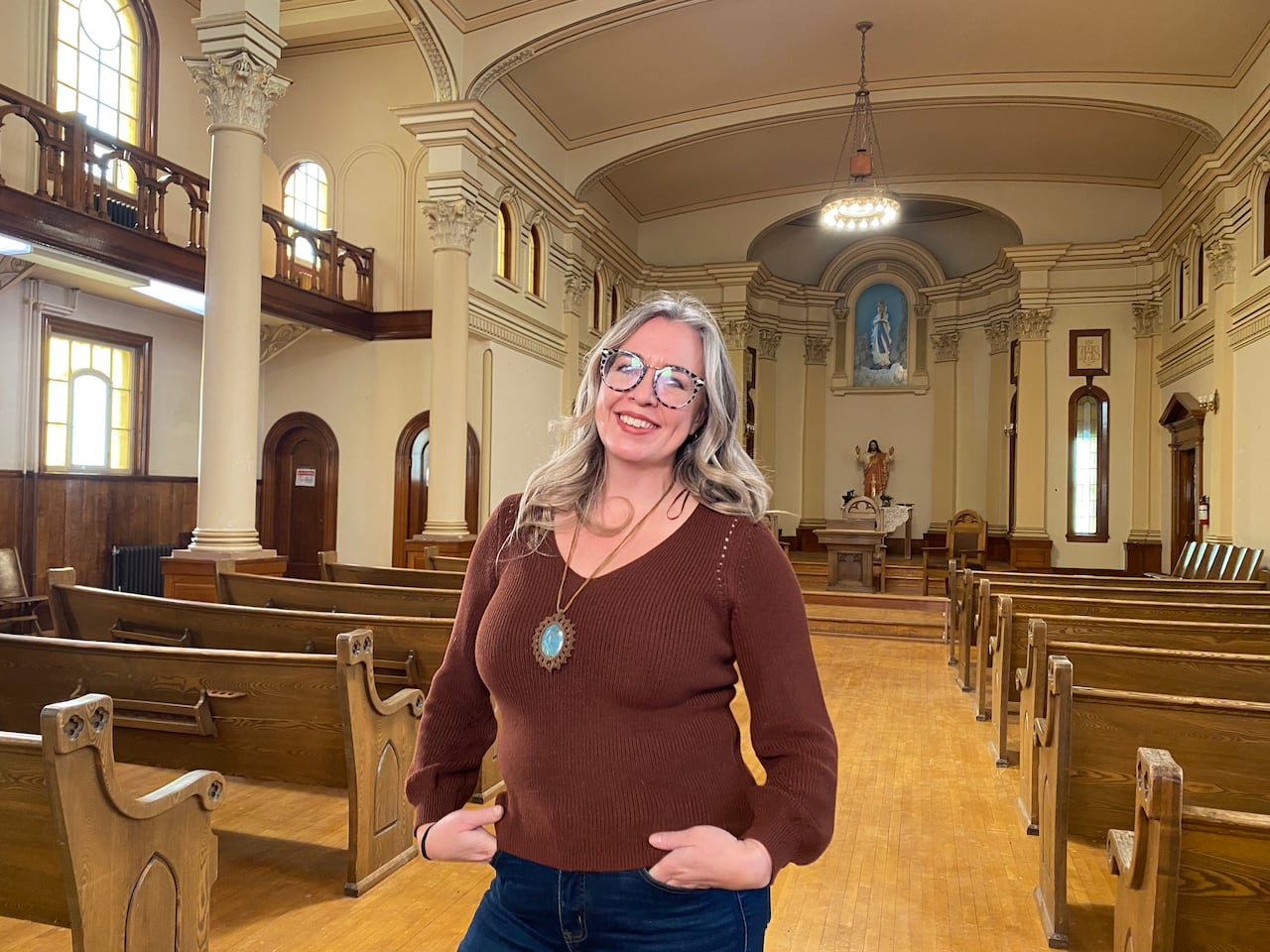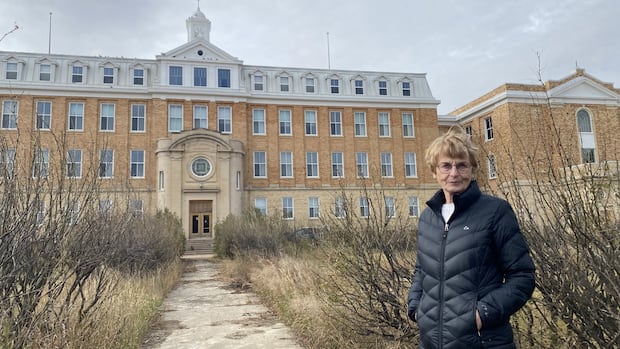CBC’s virtual road trip series Land of Living Stories explores the hidden gems across Saskatchewan. Reporter Janani Whitfield hit the road to Gravelbourg in search of inspiring stories of community spirit. This is the second of a four-part series from that community.
From the window of the historic home she manages as a B&B, Maria Lepage can see the school and convent she grew up attending — once full of life and laughter, but now sitting vacant, as it has been for nearly a decade.
It’s hard to miss the giant building at the entrance to the Town of Gravelbourg, a community of less than 1,000 people located about 150 kilometres southwest of Regina. It dominates the landscape — as does the question of its future for this small but picturesque town whose motto is “A Touch of Europe on the Prairies.”
Right now, this 90,000-square-foot building is free for the taking for anyone who has a viable idea to fix it up and turn it into a sustainable development.
“[It] means a lot to me,” Lepage said. “I think we’ve got a diamond in our community and this is one of them.… I think that people don’t realize the value of what we have here in Gravelbourg.”
When she hears people talk about knocking down this historical monument, the thought strikes pain right into her heart.
A French capital in the West
When French settlers first started coming to the area around what is now Gravelbourg, they quickly began constructing the sturdy brick buildings that stand to this day, giving the town its quaint heritage air.
The convent was constructed in 1917. The town’s famous cathedral and bishop’s palace (now Lepage’s B&B) were also built in the same area and era.
Those three buildings, now a National Historic Site of Canada, were built with the ambition to distinguish Gravelbourg as a major French centre in the West. And for a time, that ambition seemed realized, with as many as 600 students attending the school.
LISTEN| Could a century-old convent solve a housing crunch?:
After the convent closed and the students moved into a new school building, the town took over keeping up the basic maintenance of the old convent in 2016. However, keeping it functional and heated for part-time rentals wasn’t viable.

“The financials showed that the cost of upkeep was really prohibitive,” said the Town of Gravelbourg’s economic development officer, Ariel Haug.
For the past two years, the town has been seeking expressions of interest from anyone who wants to give the convent a new lease on life.
So far, there have been a lot of ideas, but not many credible proposals.
“I’ve had emails sent to me from all sorts of interesting people proposing, you know, casinos, and I think there was a penitentiary proposal at one point,” Haug said, chuckling and shaking her head.
The Town of Gravelbourg wants to save its century-old convent. The building is free for the taking, provided the right person comes along with the right idea and resources to give it a new life.
What the town would really like to see is a housing project, something that would fill what Haug sees as a real need in this community, as it is elsewhere in Canada.
“Something of this size you’ll never see again. It’s an original,” she said.
History in the here and now
There’s something improbable about the beauty of Gravelbourg’s buildings — that’s what struck Toos Giesen-Stefiuk when she and her family moved to the town from Holland in 1981.
“The first time I went to the cathedral, I’m like, ‘What were they thinking to build something so beautiful in the middle of the prairies?’” she said.
Now, she’s become a major appreciator and booster of Gravelbourg’s history. She joined the museum board and has been fundraising for more than 20 years to restore and maintain a historic grain elevator in the town.

Giesen-Stefiuk also became part of the Friends of the Gravelbourg Convent committee, a voluntary group that put together a proposal to see the convent turned into a 42-unit housing development in 2019, at a cost of $15 million.
The project never found the money it needed to move into the next phase. But with housing identified as a major need across Canada, residents hope the time is right to move the plan forward.
Giesen-Stefiuk knows just how iconic and important historic buildings can be, and how much they mean to the psyche of a place.
“When I grew up in Holland as a child, there were windmills and they were not in use anymore and they were tearing them down till somebody said, ‘We should keep some,’” she said. “And who doesn’t know about the windmills in Holland?”
Walking through the empty hallways of the century-old convent building in Gravelbourg, with brilliant light flooding in and high ceilings throughout, Giesen-Stefiuk and Lepage see nothing but potential.
“And I think we can’t give up on that,” said Lepage. “This building is going to be here way [after] you and I are going to be alive, so we might as well make up our minds — we’re going to do something with it. I hope that we can.”








